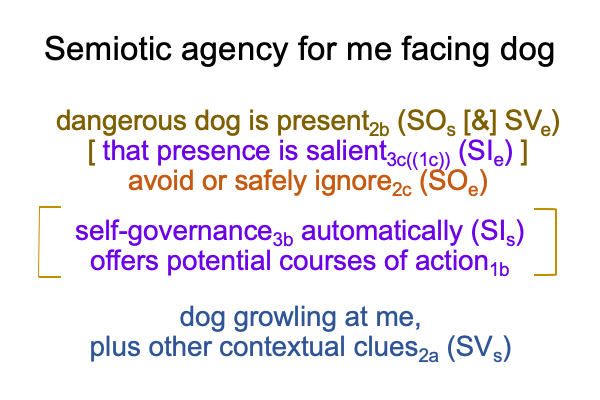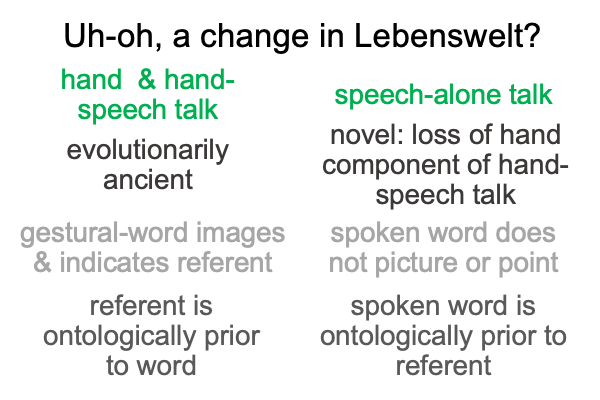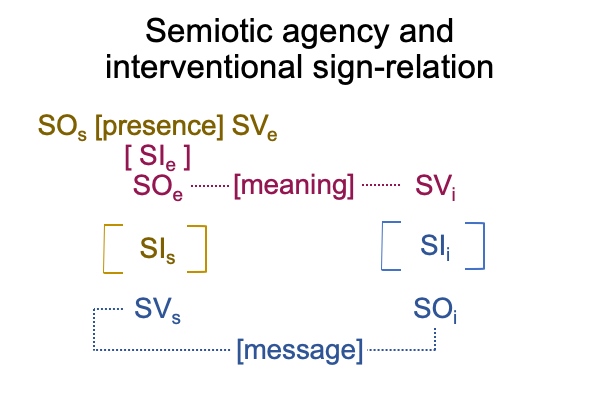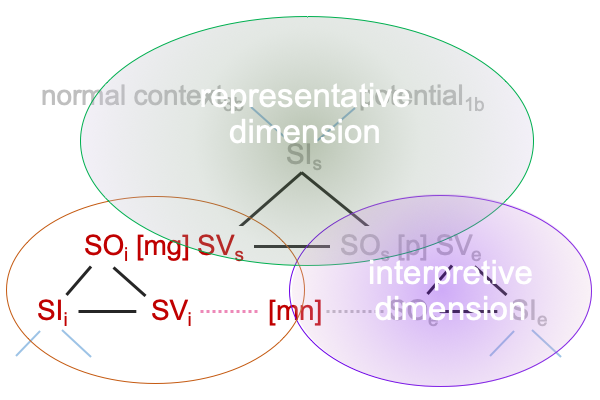Looking at Hongbing Yu’s Chapter (2024) “…Danger Modeling…” (Part 1 of 7)
0753 The text before me is chapter seventeen of Pathways (2024, see point 0474 for details. pages 363-375). This chapter concludes Part III, titled, “Meanings in Organism Behavior and Cognition”. The related title in Semiotic Agency (2021, see point 0473) is “Nonhuman Agency”. The author works at Toronto Metropolitan University, in the Department of Languages, Literatures and Cultures.
The full title of chapter seventeen is “The Peculiar Case of Danger Modeling: Meaning Generation in Three Dimensions”.
0754 Of course, danger offers great examples for semiotics. The abstract says as much. In 2022, Marcel Danesi publishes a book on the topic, titled Warning Signs: The Semiotics of Danger.
For example, when a dog growls at me2a, that serves as a sign-vehicle (SVs) that is interpreted by my self-governance3bcontextualizing the potentials of various courses of action1b (SIs) in order to construct information2b (SOs).
0755 Here is a picture, using the S&T noumenal overlay.

0756 Yes, semiotic agency looks like a noumenon that exhibits observable and measurable facets (phenomena) that may be used to construct models of [self-governance3b operating on potential courses of action1b (SIs)] and[sentience3c((1c)) (SIe)].
Does the reader notice my sleight of hand in the preceding statement?
I substitute “sentience” for “salience” in SIe.
0757 The substitution is justified because information2b (SOs [&] SVe) says, “Danger is present.”
The “danger” goes with SOs. Its “presence” is what I am sentient of (SVe).
The exemplar sign-relation goes like this. The danger2b (SVe) that I am sentient of3c,1c (SIe) stands for something that I can avoid or safely ignore2c (SOe).
0758 So, what is the problem?
The author does not have the Sharov and Tonnessen noumenal overlay, which is foundational for the Positivist’s judgment, when it comes to biosemiotics.
Consequently, the author proposes that Thomas Sebeok’s concept of modeling may be used as a productive approach. After all, modeling offers a highly integrative framework for meaning generation.
0759 Shall we see?
If highly integrative frameworks for meaning (that is, Sebeok’s models) are um… “natural”… for humans, then they should support implicit abstractions, characteristic of the Lebenswelt that we evolved in. Implicit abstractions are holistic.
0760 But, there is a problem.
We no longer live in the Lebenswelt that we evolved in. The Lebenswelt that we evolved in practices hand- and hand-speech talk, which is holistic and relies on Peirce’s natural sign-relations of icon and index. Of course, symbols operate in the background, allowing hand talk to become linguistic.
0761 Our current Lebenswelt practices speech-alone talk.

0762 How is this relevant to the current discussion?
With speech-alone talk, different aspects of a holistic implicit abstraction can be explicitly labeled.
The author identifies three dimensions to Sebeok’s models (as highly integrative frameworks of meaning): existential, representational and interpretational.
0763 These three dimensions are explicit abstractions. They label “dimensions” of a model that frames message{SVs}2a and integrates presence {SOs [&] SVe}2b into meaning {SOe}2c.
In short, these dimensions bring this examiner right back to semiotic agency.
0764 Say what?
These dimensions bring this examiner right back to specifying and exemplar sign-relations.
So, the direction that this examiner will take, with plenty of creativity (hence, mistakes), calls to mind the S&T noumenal overlay, as the purely relational structure that all biological entities and processes have in common, including the case of me, surprising an unfamiliar dog, who is snarfing something already dead, found in a pile of autumn leaves. The incident occurs on my morning walk with Daisy (who is taken by surprise herself, along with me).


